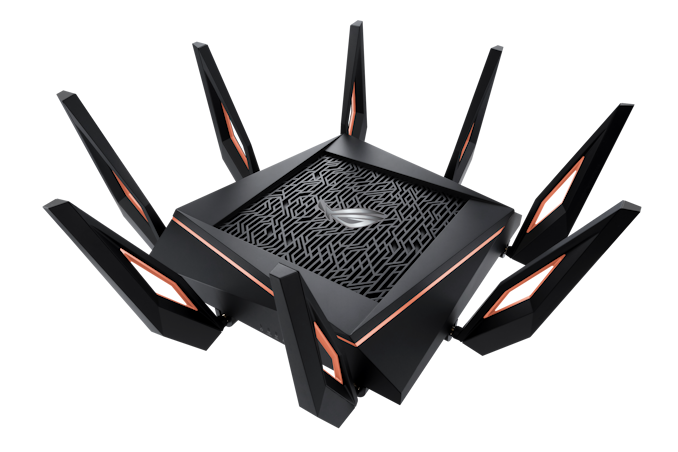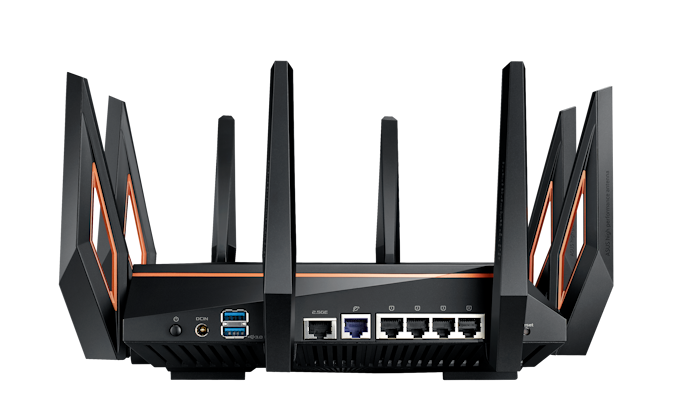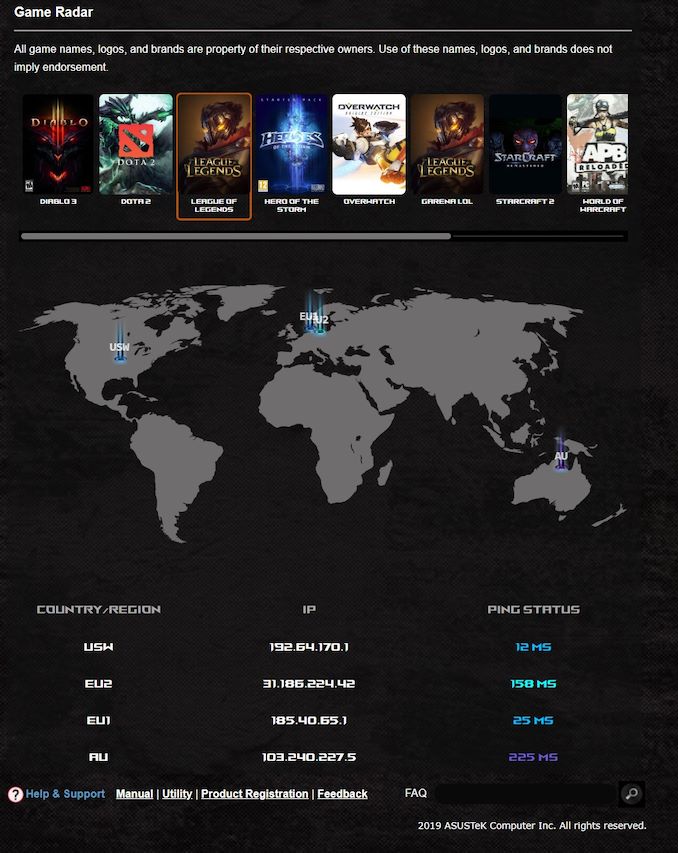AT 101: Wi-Fi 6 And Why You Want It
by Brett Howse on February 12, 2020 8:00 AM ESTThe 2020 AnandTech Wi-Fi Test Bed
We’ve been comfortably using Wi-Fi 5 for some time now, and it is only in the last several months that laptops have been shipping with Wi-Fi 6 based networking, mostly thanks to Intel’s Project Athena which has a requirement of the Intel AX200 Wi-Fi module, which is Intel's first Wi-Fi 6 based module on the market. Previously almost all shipping laptop computers offered Wi-Fi 5, and even a few with the latest Intel wireless adapters such as the Wireless-AC 9260 offered the advanced Wi-Fi 5 options such as 160 Mhz channel width, and MU-MIMO, so its nice to see a move to a new standard which includes these benefits across the board.
Although there are now quite a few Wi-Fi 6 routers and access points on the market, we had some specific criteria to meet. The router had to support Wi-Fi 6, and the 160 MHz channels, but because we are testing for performance, and not for capacity, we need an access point with a multi-Gigabit Ethernet connection. A typical laptop with a 2x2:2 network connection will be connecting to the access point at 2.4 Gbps, so transferring files from Ethernet over Gigabit will be a bottleneck. This does limit the selection somewhat.
After evaluating several models, we decided on the ASUS ROG Rapture GT-AX11000. The name is a mouthful, but meets all of our criteria and more. Most importantly, it offers the coveted 2.5 GbE port.
The ASUS ROG Rapture GT-AX11000
As the name implies, this router from ASUS can support up to 11000 Mbps over wireless, thanks to the 4x4 2.4 GHz, offering 1148 Mbps, and the two 4x4 5 GHz networks each offering 4804 Mbps. This adds up to just under 11000 Mbps, although with wireless the maximum connection speed is pretty much impossible to achieve. With the two separate 5 GHz networks, you can easily split off your consumption devices with higher priority devices, reducing interference on each network.
On the Wide Area Network (WAN) side there is a single 1 Gbps connection, and on the Local Area Network (LAN) side there are four 1 GbE and the single 2.5 GbE connection.
This router is built for capacity, with eight external antennae, and being a gaming router it also offers plenty of RGB lighting options. For those that don’t need the lighting, it can be turned off. ASUS also some tools to change the priority of gaming packets to reduce latency, assuming your network is that busy, and specifically prioritizes traffic from other ROG devices to make setup as easy as possible. ASUS even includes a utility to ping the various game servers for popular multiplayer games to provide you a map of latency to each one.
The GT-AX11000 also integrates with the ASUS AiMesh networking equipment to provide a whole-home mesh network, if even a router of this size can’t cover the entire house, either due to size or building materials blocking the signal.
For testing, the router is used in the access point mode, with the LAN connecting being over the 1 Gbps Ethernet, and a server connected directly to the router in the 2.5 Gbps port.













149 Comments
View All Comments
Makaveli - Wednesday, February 12, 2020 - link
True but using a 4 year old article in this example failed. In 2016 I was already using a Docsis 3.0 250/20 Cable connection. Yet that article shows 16mbps as the national average..By 2017 I was on a Docsis 3.1 500/20 cable connection and now in 2019 I moved up to a 1Gbps/750Mbps fiber connection.
The majority of cable providers in the US are still using Docsis 3.0 modems and within the last year or you are finally starting to see docsis 3.1 modems mostly because Comcast started to push them out.
triphoppingman - Wednesday, February 12, 2020 - link
"True but using a 4 year old article in this example failed. In 2016 I was already using a Docsis 3.0 250/20 Cable connection. Yet that article shows 16mbps as the national average"Anecdote vs Aggregated data? I know which one I prefer.
Makaveli - Wednesday, February 12, 2020 - link
haha well played sir.However most of the users on that cable ISP in canada I was using went thru the same Docsis 3.0-3.1 progression and that is one the biggest Cable ISP in Canada. And everyone sent from 250mbps connection to the eventual 3.1 Docsis with 1Gbps cable. So the numbers are bigger than just my example.
rrinker - Wednesday, February 12, 2020 - link
I have 350 down/15 up which is plenty fast for streaming and even downloading DVD size games 'updates', and I am not data capped.I can get up to 1Gb down, but I don;t want to pay more. I still pay the same as I did when I moved in when it was 200Mb down, speed has been upped 3 times with no change in the bill.
triphoppingman - Wednesday, February 12, 2020 - link
No, frankly, I don't trust an anonymous Internet poster. Not when the facts are not on your side. How is the weather up there?808Hilo - Wednesday, February 12, 2020 - link
The social trust index in the US is half of that in Canada. We made us 320 million sociopaths, So no matter what you say - the Murican will tell you that everything is better here. The murican actually believes this against better knowledge - while the facts tell that the american project is now the first and foremost failed state on this planet. Yep, internet here means gouging, unkept promises, lousy service at elevated pricing. Its ridiculously bad for the big majority. No dont trust the voice of an murican on the internet - and we should build a higher wall around the US - to keep them in.Makaveli - Wednesday, February 12, 2020 - link
What facts?AdhesiveTeflon - Wednesday, February 12, 2020 - link
Not gonna lie, Canada's cellphone coverage is phenomenal compared to anything in the US. I can be in the middle of the trans-canadian highway in Saskatchewan and still have at least 3G. I go 30 miles outside of chicago and I don't have any signal.JKflipflop98 - Thursday, February 13, 2020 - link
I get 1gig speeds from comcast for $45 a month over cable here in Oregon.flyingpants265 - Wednesday, February 12, 2020 - link
50% of the entire "Canada" lives pretty close to Toronto.It's kinda rare to have somewhere that won't get 50mbps as a minimum. Places in big cities get 1gbit+. No data caps either.